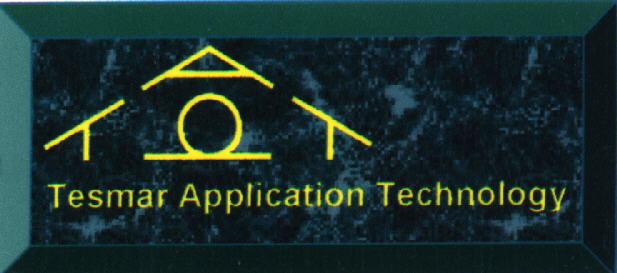|
In the face of huge popularity, growing success and satisfied customers, it’s difficult to criticize radiant floor heating technology. Done well, under the proper circumstances, radiant floors are among the most comfortable and efficient means of distributing heat in most homes. Operating within their capabilities, radiant floors can easily meet the heating loads of well designed, modern structures. Over the last 15 years, however, I have seen many projects where designers have exceeded the capability of the radiant floors and have had to face some harsh realities. Thermodynamics is not just a good idea….it’s the law.
The output of a radiant floor is limited in two ways. First, the maximum surface temperature of a radiant floor is limited to around 87F (about 45 Btu per square foot). If the floor is operated above this temperature, the occupants are likely to complain of uncomfortably hot and sweaty feet. Secondly, radiant floors are limited by the amount of energy that can penetrate highly resistant floor coverings, such as certain carpeted and wood floors. Often, these materials limit the actual output to less than 20 Btu per square foot. Unfortunately, these beautiful and thermally resistant floor coverings are often used in the more elegant rooms, with large windows and high heating loads. Radiant floor designers often must stretch to meet the load such rooms. Also, floor coverings are likely to change significantly over the life of the building, leading to the comment “It worked until the owners placed a thick Persian rug over the wood floor”. Radiant ceilings can easily operate at surface temperatures up to 100 F, delivering in excess of 55 Btu per square foot. Since ceilings are typically constructed of gypsum based sheet rock, they offer very little resistance to thermal transfer. Unless designers regress to the 1960’s, and resume putting shag carpeting on the ceilings, it’s likely the output of the ceiling won’t change during the life of the home. In any discussion of radiant ceilings and comfort, there seems to be some ingrained misunderstandings of the concepts. Someone will say that “heat rises, therefore you’ll have a hot head and cold feet”. Not true. Heat doesn’t rise. Hot air rises. In radiant systems objects of mass are heated without heating the air. In fact, there is typically more hot air rising with a radiant floor than with a radiant ceiling. This is because air molecules that come into contact with the radiant ceiling already occupy the highest strata. In radiant floors, the cooler molecules sink and come into contact with the warm floor surface and rise as their density changes with heat, driving the convective forces that cause stratification. Under normal conditions neither radiant floors or radiant ceilings heat the air to an uncomfortable level like in forced air systems, however. Another myth about radiant floors and ceilings involves the surface temperatures that are achieved. Just as the overhead rays of the sun are absorbed by the beach sand, radiant ceilings warm the floor. There are no cold floors in radiant ceiling projects. You can put a piece of Tahiti in your living room with radiant ceilings. Unless you believe tropical island comfort requires the flow of underground lava. I also hear radiant ceilings criticized for what is termed “shadowing affects”. This is the belief that legs under tables or desks are shielded from the radiant heat and are, therefore, cold. Radiant ceilings, like floors both radiate and re-radiate. The invisible heat rays emit from the heated surface to other colder unheated surfaces. The total affect of all of this bouncing of energy is very even heat distribution. If a person is seated at a table near an outside wall, there could be some shadowing from above with a radiant ceiling, just as there might be shadowing from below with a radiant floor when seated on a sofa near the outside wall. In most situations, shadowing for radiant ceilings or floors is negligible. More significant, however is the possibility that objects placed on the radiant floor will impede the flow of energy. Area rugs, and some furnishings such as certain sofas and beds can reduce the usable floor area, increasing the Btu load per square foot, and, perhaps, exceeding the system capability. Radiant ceilings are not subject to these types of problems. Radiant ceilings accelerate fast, when needed, to meet a big change in heating load. They dissipate energy fast as well. The responsiveness of radiant ceilings makes them excellent for modern controls, placing energy where it is needed when it is needed, and achieving superior comfort and efficiency. Some high mass radiant floors are sluggish in that they take a long time to accelerate to meet the load. In modern heating systems, too much emphasis has been placed on energy efficiency of the heat plant while wasting energy on poor distribution. This is like putting a Viper engine in a Yugo. Far more heat energy can be salvaged by not wasting it in poorly controlled buildings, than can be achieved by squeezing another Btu per hour out of a heat plant. There are some pretty interesting solutions to heat distribution problems by using radiant floors in conjunction with radiant ceilings. In this way the floors are not required to meet the entire load, yet are conditioned to provide comfortable surface temperatures. The ceilings are heated, where necessary, to take on the severe conditions and give everyone involved the peace of mind that the system will keep up with the heat loss under severe conditions. Without a doubt, radiant ceilings cost far less than radiant floors. In most cases they cost less than half of a radiant floor. Lower cost means more opportunity. They take less effort to design and install. Radiant ceilings are perfect for retrofit situations. It is very inexpensive and easy to lower a ceiling to accommodate the radiant ceiling, but difficult to raise a floor. Radiant ceilings are not optimal over a concrete slab placed on the grade of the earth. Radiant floors are best for these situations. I also prefer radiant floors in rooms with smooth surface floors, such as bathrooms, where occupants are often barefoot. It is a real nice touch. But when the going gets tough, the heat losses are high and the floor coverings are plush, radiant ceilings cannot be beat. Tom Tesmar Tom Tesmar is an industry consultant specializing in the field of emerging technology for heating and plumbing systems. Tom can be reached at Tesmar Application Technology, 595 Tower Road, Hudson, WI 54016, (715) 381-2967, FAX 715 381-2965, or ttesmar@pressenter.com on the Internet.
|

